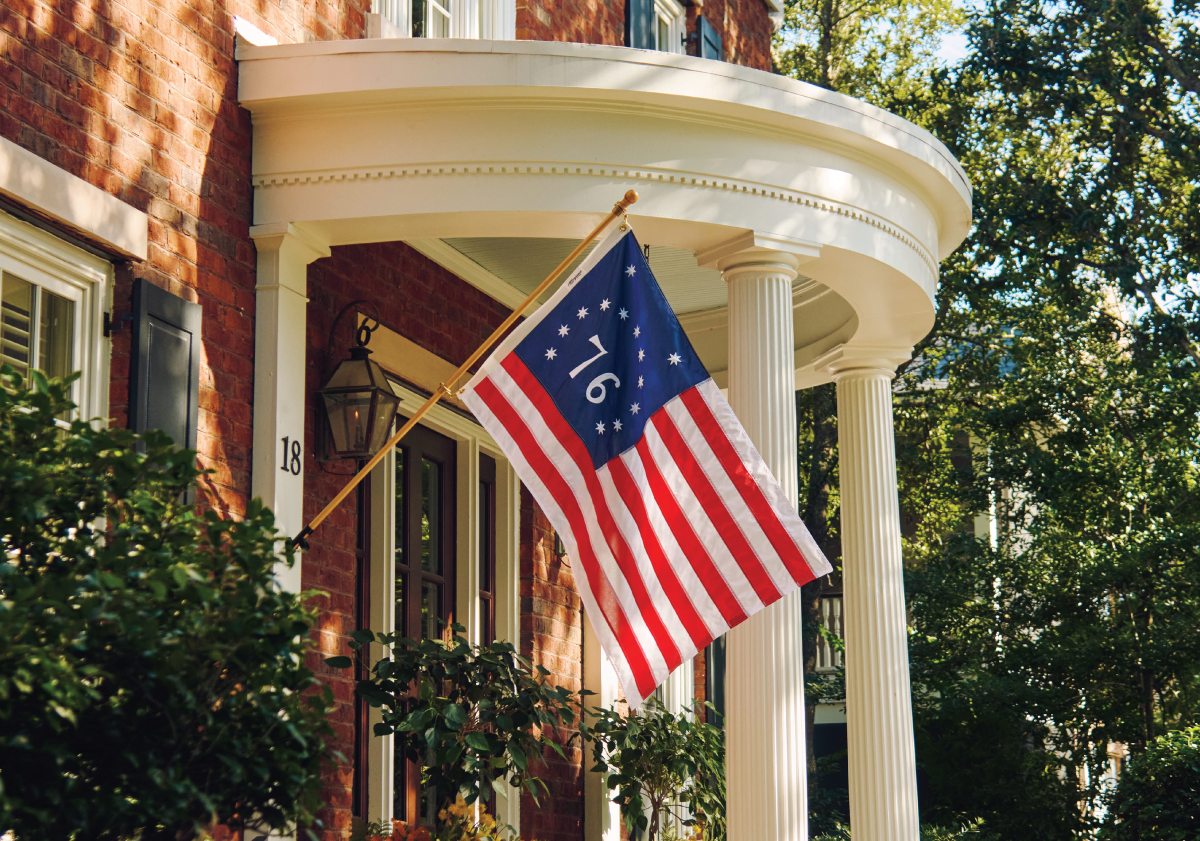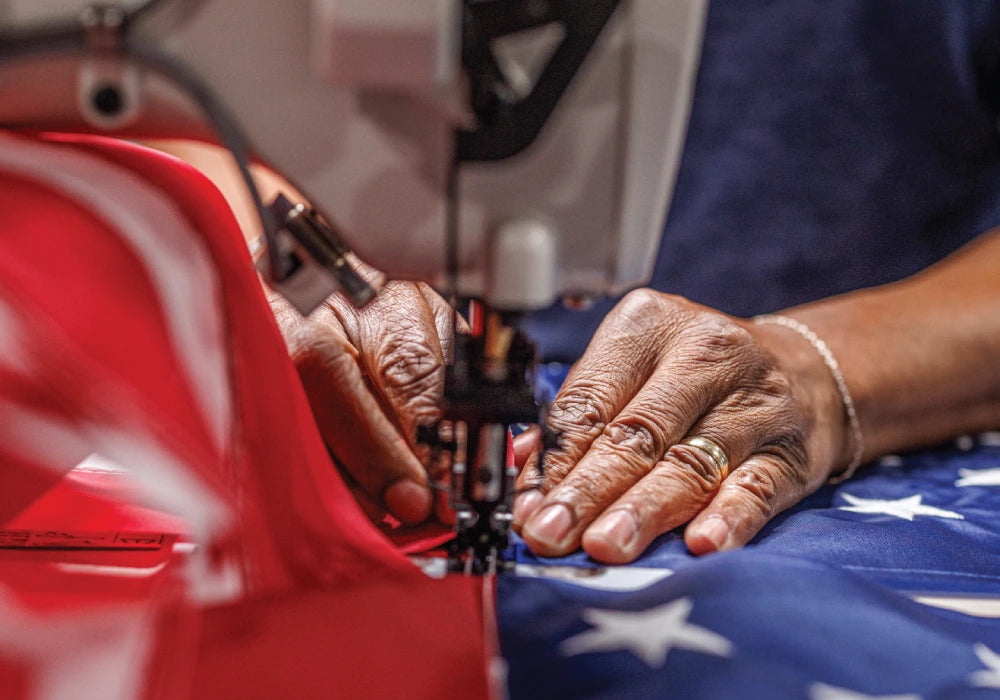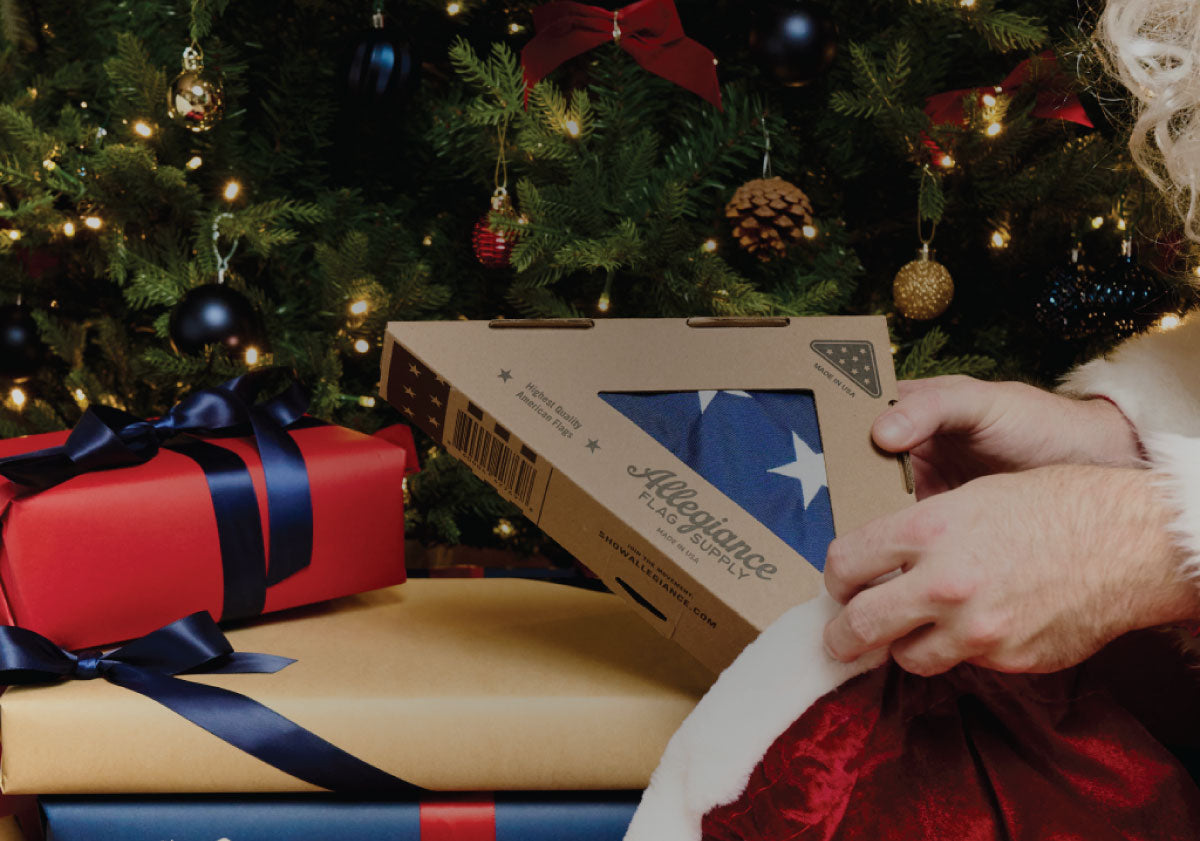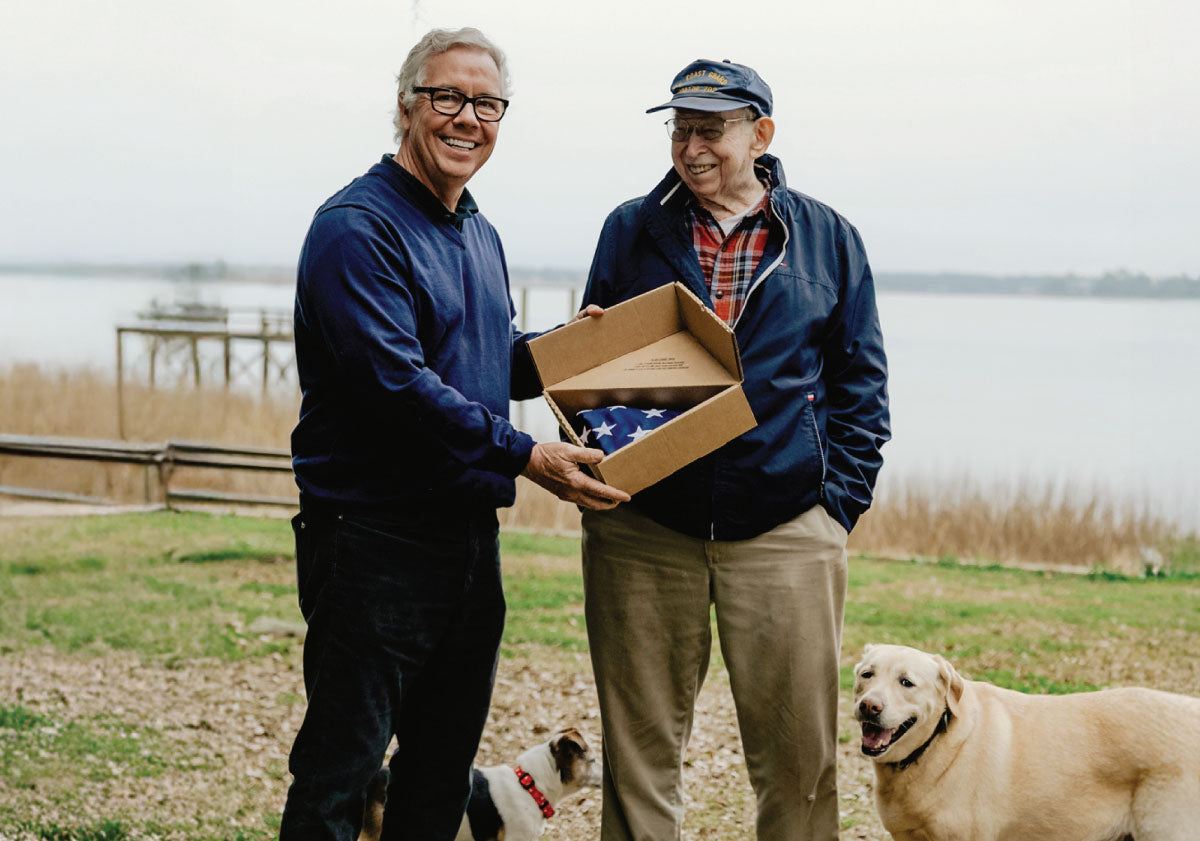Boat flags are an essential part of safe boating. They signal to other boats and the Coast Guard what your intentions are and help you communicate with others on the water. There are many different types of boat flags, and it can be unclear to know which one to use in a particular situation. This blog post serves as a comprehensive guide to U.S. boat flags, ensuring you use them correctly with confidence.
What Is An American Boat Flag
An American boat flag, also known as a US maritime ensign, is the United States national flag used for boats registered under U.S. law. It features thirteen equal horizontal stripes alternating between red and white, with a blue canton featuring fifty pointed white stars arranged in rows.

Common Nautical Flag Terms
Understanding the language of boat flags is essential for effective communication and safe navigation on the water. Whether you’re a seasoned sailor or new to boating, familiarizing yourself with common nautical flag terms will help you interpret signals and use flags correctly. Below, we break down some of the most frequently used terms in the world of boat flags, providing clear definitions and context for each.
-
Hoist: The term "hoist" refers to the act of raising a flag up a halyard or flagpole on a vessel. In nautical contexts, the hoist is also the vertical edge of the flag attached to the pole or line. Properly hoisting a flag ensures it is visible and displayed at the correct height, which is vital for clear communication and signaling among boats. Ensuring flags are fully hoisted and not tangled is part of basic flag etiquette on the water.
-
Dip: This is often done by lowering the flag to a specific angle or briefly lowering and then raising it again. Dipping is commonly used when passing another vessel, during ceremonial events, or when saluting a naval ship. It is important to note that not all flags are dipped; for example, the U.S. national ensign is traditionally not dipped except in specific formal circumstances.
-
Canton: The "canton" is the rectangular area found in the upper corner of a flag, usually at the top hoist side. On the American flag, the canton is the blue field with white stars. In nautical flags, the canton may contain symbols or emblems that provide additional identification or meaning. Recognizing the canton helps in distinguishing between different flags, especially when multiple flags are flown together on a vessel.
-
Pennant: In nautical contexts, pennants can indicate numerical values, specific messages, or membership in an organization. For example, numbered pennants are used in combination with letter flags to convey detailed information. Pennants are often flown from specific locations on a vessel, such as the mast or yardarm.
-
Yardarm: On a boat, the yardarm allows for multiple flags to be flown at once, each with its own meaning or function. The placement of a flag on the yardarm can indicate its significance, such as distinguishing between national, courtesy, or signal flags. Proper use of the yardarm is an important aspect of nautical flag etiquette.
By understanding these common nautical flag terms, boaters can navigate the traditions and practicalities of maritime signaling with greater confidence. Mastery of this terminology not only enhances communication and safety on the water but also connects sailors to the rich heritage of seafaring around the world.
The Significance of Flag Colors
Flag colors play a crucial role in nautical signaling, serving as the foundation for clear and effective communication at sea. The standardized palette, limited to black, blue, red, yellow, and white, was chosen for maximum visibility against the sky and water, ensuring that signals can be easily recognized from a distance or through binoculars. Each color, whether used alone or in combination, is not arbitrary; it is carefully selected to convey specific messages or warnings. For example, a solid red flag often signals danger or hazardous cargo, while a blue and white flag may indicate the presence of a diver in the water. The use of contrasting colors and bold patterns on flags is intentional, making each flag distinct and minimizing the risk of confusion during critical situations. Moreover, particular color combinations carry unique meanings, enabling mariners to quickly interpret complex information. This system of visual cues transcends language barriers and remains a universal method of non-verbal communication on the water. By comprehending the significance of these colors and their combinations, boaters can respond appropriately to warnings, requests, or emergencies, ultimately enhancing safety and cooperation among vessels navigating shared waterways.
What Are The Uses Of An American Boat Flag
Communication And Signal
The primary use of an American boat flag is for communication and signaling. Boats will fly a specific type of flag to communicate with other vessels and the Coast Guard. For example, when sailing in a foreign port, a U.S. flag on a boat may indicate that the vessel is requesting permission to enter or leave the port.
Identification
It is used to identify a vessel’s nationality, position, destination, or intentions when entering or leaving port. It can also be used as a signal of distress, for friendly recognition between vessels, or to indicate a vessel’s nationality in an international waterway.

Honor
American boat flags are also flown as a sign of respect and honor for important events such as national holidays, commemorating important people, or marking a ship’s return home after a voyage. Regardless of the purpose for which you fly the flag, it is essential to do so correctly. This includes ensuring that it is not tangled or in disarray and is held securely.
Nautical Flag Alphabet and Number Codes
The nautical flag system is a universally recognized method of visual communication at sea, allowing vessels to convey messages quickly and clearly, even when radio silence is required or electronic communication is unavailable. Central to this system is the International Code of Signals, which assigns a unique flag to each letter of the alphabet (A-Z) and each numeral (0-9). The letter flags are typically square in shape and feature bold, contrasting colors and patterns to ensure visibility at a distance. For example, the flag for "A" (Alpha) is divided vertically with white and blue, while "B" (Bravo) is solid red. Each flag not only represents its corresponding letter but is also associated with a specific meaning or message in maritime operations. For instance, the Alpha flag signals “diver down, keep clear,” while the Bravo flag indicates the vessel is carrying dangerous cargo.
Number flags, known as pendants, are shaped like elongated triangles with flat tips and are also designed for maximum visibility. There are ten pendants, each representing one of the digits from zero to nine. When a number greater than nine needs to be communicated, multiple pendants are flown in sequence to form the complete number. This system enables the transmission of coordinates, times, or other numerical information essential for navigation and coordination between vessels.
The practical use of the nautical flag alphabet and number codes extends beyond simple identification. Vessels can spell out names, locations, or instructions by hoisting a series of flags, one for each letter or number. This is especially useful in situations where clarity is paramount, such as during regattas, emergencies, or when operating in busy harbors. For example, a boat might display the flags for “O” (Oscar) and “W” (Whiskey) together to indicate that a person has fallen overboard and requires medical assistance. Similarly, ships can display combinations of letter and number flags to relay information about their position, intended maneuver, or to request assistance. Learning to recognize and interpret these flags is a fundamental skill for all mariners. The system’s standardized nature ensures that messages are understood regardless of language barriers, fostering safety and cooperation on international waters. Whether used singly or in combination, the nautical flag alphabet and number codes remain an indispensable tool for non-verbal communication at sea, preserving a tradition that is as relevant today as it was centuries ago.
The Different Types of American Boat Flags
Ensign
The most common flag of the United States, the ensign, is used to indicate national identity. It should be flown from the stern when sailing in US territorial waters.
Courtesy
A courtesy flag is typically smaller than an ensign and should be flown from the bow or foremast to signify respect for other countries' flags when sailing in their waters.
Burgee
The burgee is an identifying flag flown from the bow or mast of racing boats. It usually has a triangular shape and may feature the club’s crest, logo, or name.
House Flags
House flags are flown from vessels to indicate the vessel’s owner or operator. It typically contains the company’s logo, name, or initials.
Signal Flags
Signal flags are used to communicate between boats and include international and private signals. These flags usually have a distinctive pattern with one letter in each corner.
Combined and Special Meanings of Flags
While individual nautical flags each have a standard meaning, their true power emerges when flown in combination. Two or more flags hoisted together can signal more complex situations, like distress, maneuvering difficulties, or specific navigational instructions. For instance, pairing the Delta and Victor flags communicates “I’m maneuvering with difficulty and require assistance,” while three or more flags can convey information about compass points, ship names, or time and position. Beyond these standardized messages, certain groups develop exclusive or even secret flag combinations, creating a specialized language understood only by select participants. This allows for confidential or highly efficient communication during events or operations. Learning these combinations not only enhances safety and coordination but also connects boaters to the rich tradition and layered complexity of maritime signaling.
American Boat Flags Sizes
American boat flags come in various sizes, each suited to its specific purpose. A larger flag can be seen from farther distances than a smaller one and will be more likely to draw attention from authorities or nearby vessels.
-
The US Coast Guard considers the smallest acceptable size for any boat to be at least 8x12 inches, although larger boats may require larger flags.
-
20x30-inch flags are common for vessels up to 65 feet long
-
30x48-inch flags are suitable for cruisers and ships over 65 feet in length.
Larger pleasure crafts and commercial crafts should use even bigger flags accordingly. When embarking on a voyage, it is always essential to make sure your American boat flag is visible from far away so as not to run afoul of local regulations or attract unwanted attention.
American Boat Flag Etiquette
Boat flag etiquette in the United States can be complex since international and federal requirements exist. According to maritime law, vessels must display a distinctive national ensign visible from all sides of the boat. This signal should be hoisted aloft when the craft is underway, and it is typically left up until sundown before being lowered for the night. Other flags may also be flown on boats in US waters, such as courtesy flags for foreign nations or military branch signals for members of the armed services. It’s important to recognize these secondary signals correctly so as not to offend fellow sea travelers, and ignorance of proper procedures could lead to untoward scenarios between different boat owners.

American boaters should make sure they understand boat flag etiquette before they set sail, ahead of time, to show respect and protect themselves from potential misunderstandings on the open water. By understanding the different types of American boat flags, their purpose, size requirement,s and etiquette regulations, you can stay safe and respectful while on the ocean. It’s important to be familiar with these rules so you can have a safe trip with minimal hassle. For premium-quality American boat flags crafted for durability and pride, visit Allegiance and fly your colors with confidence on every voyage. With proper knowledge and preparation, you will be able to enjoy your time out on the water and explore the world of American boating.






